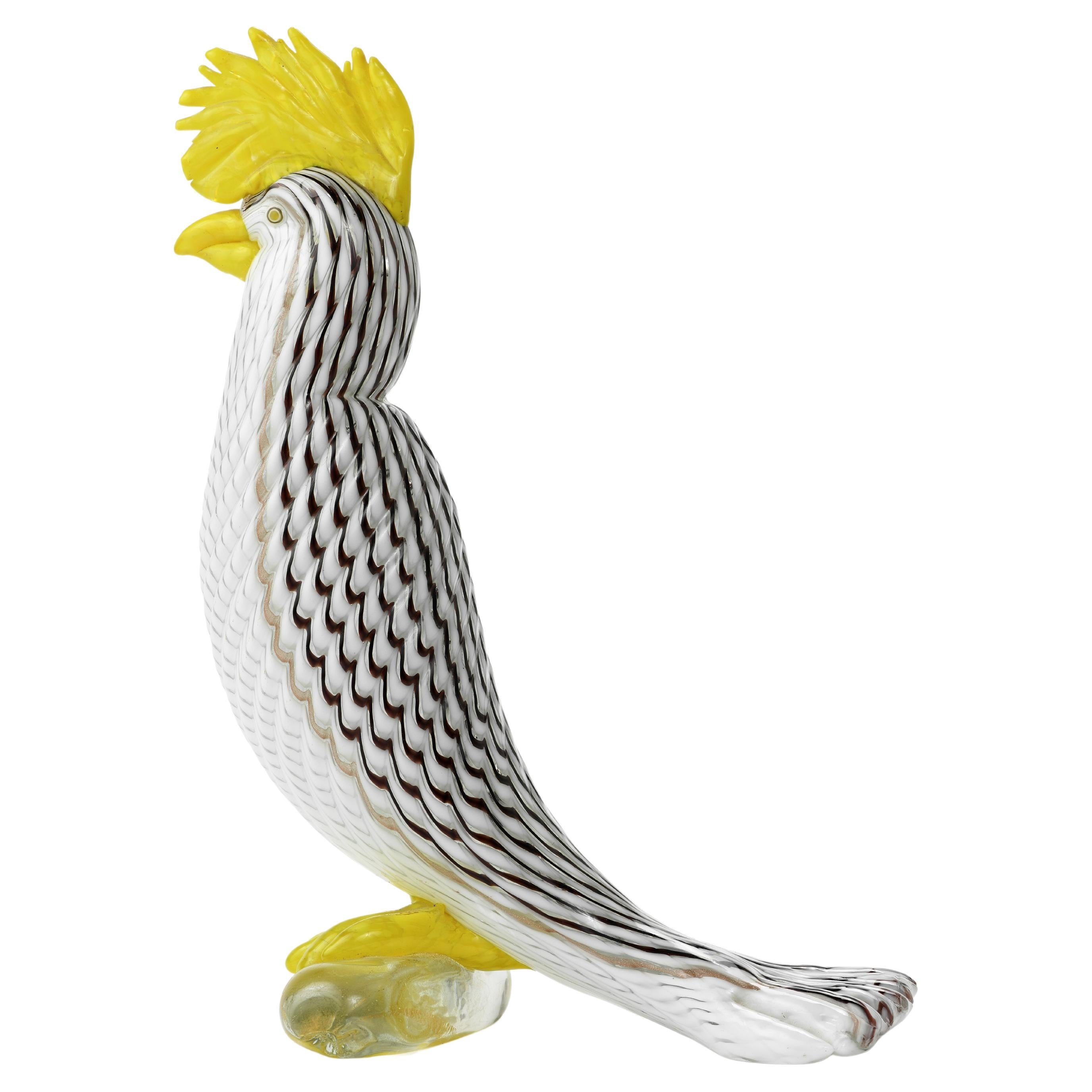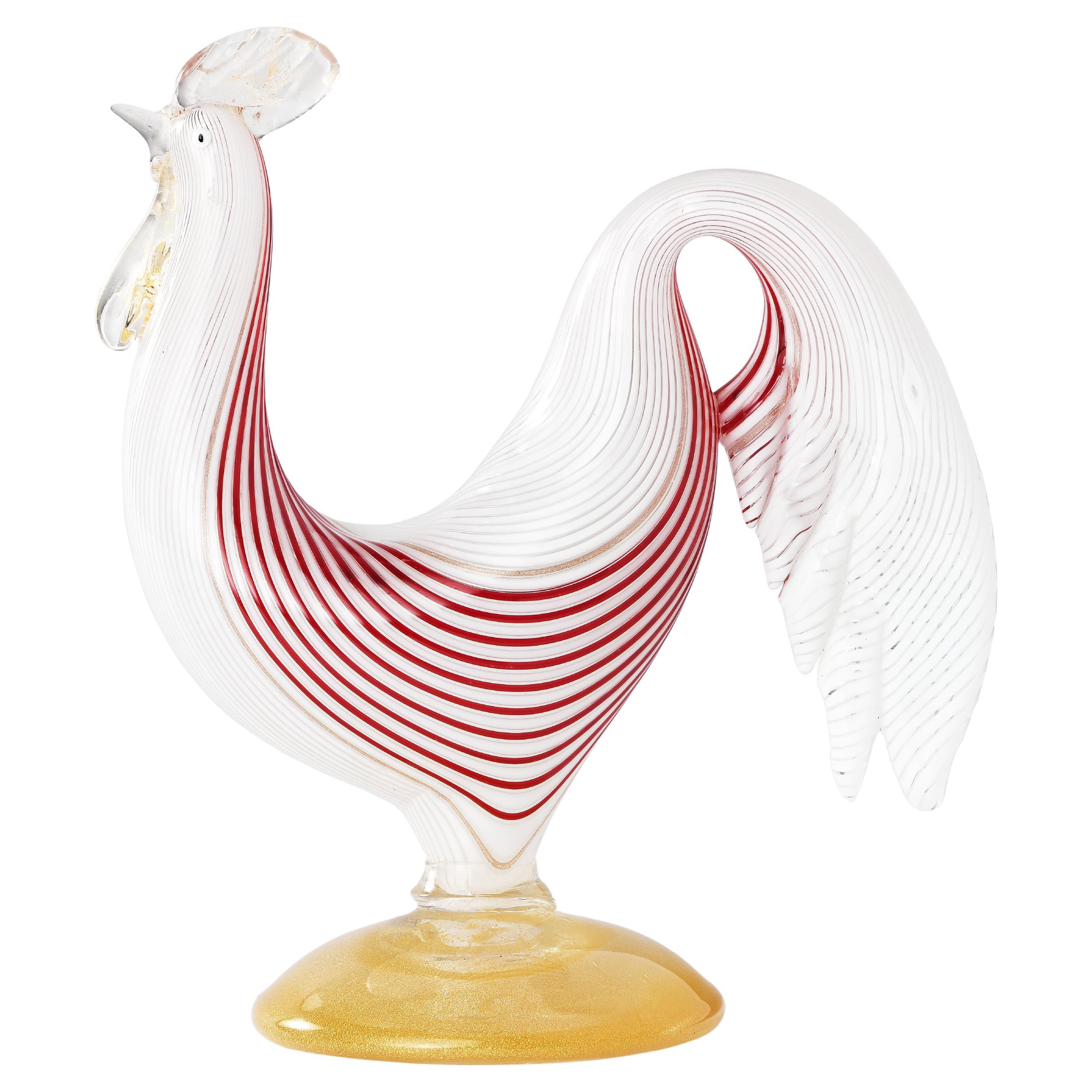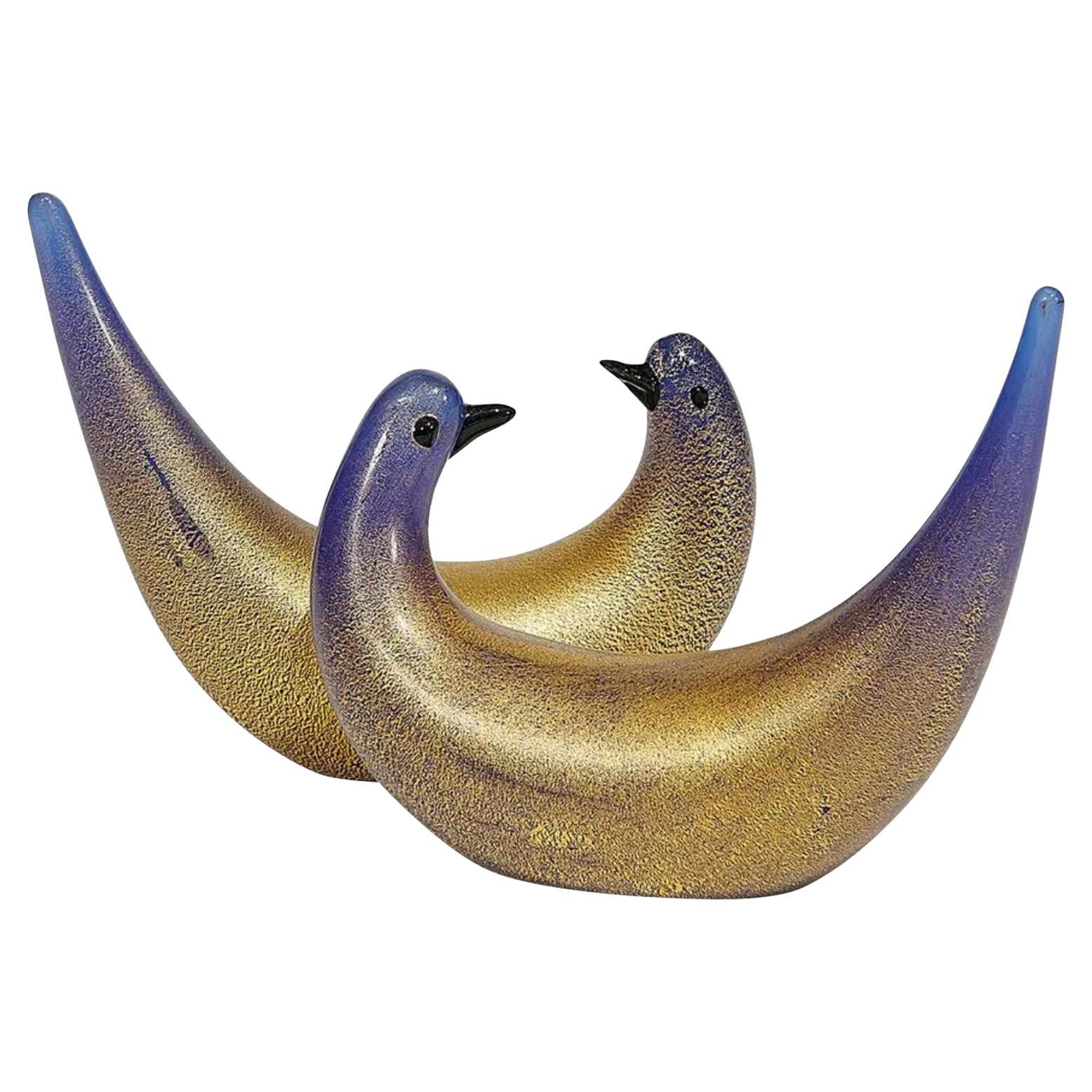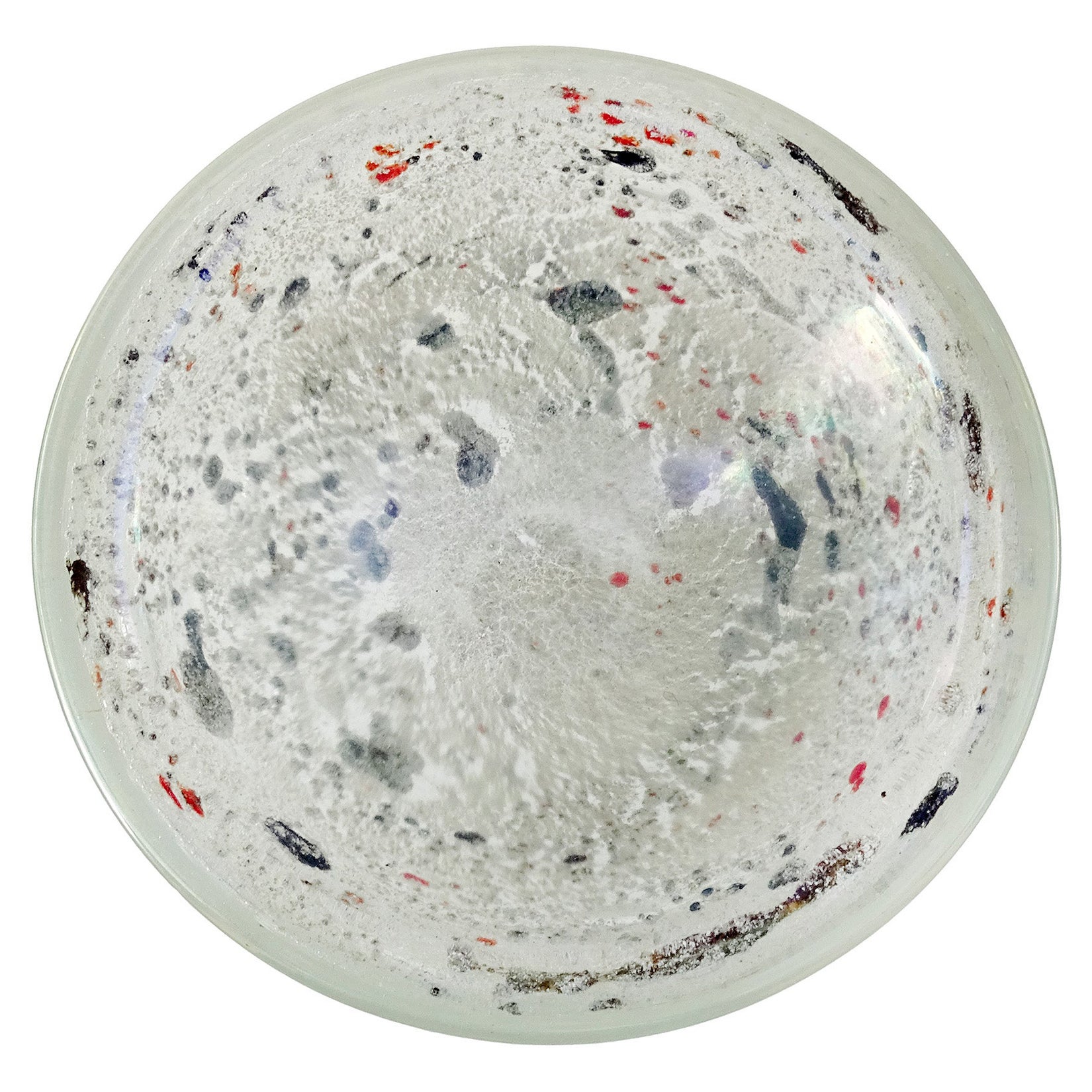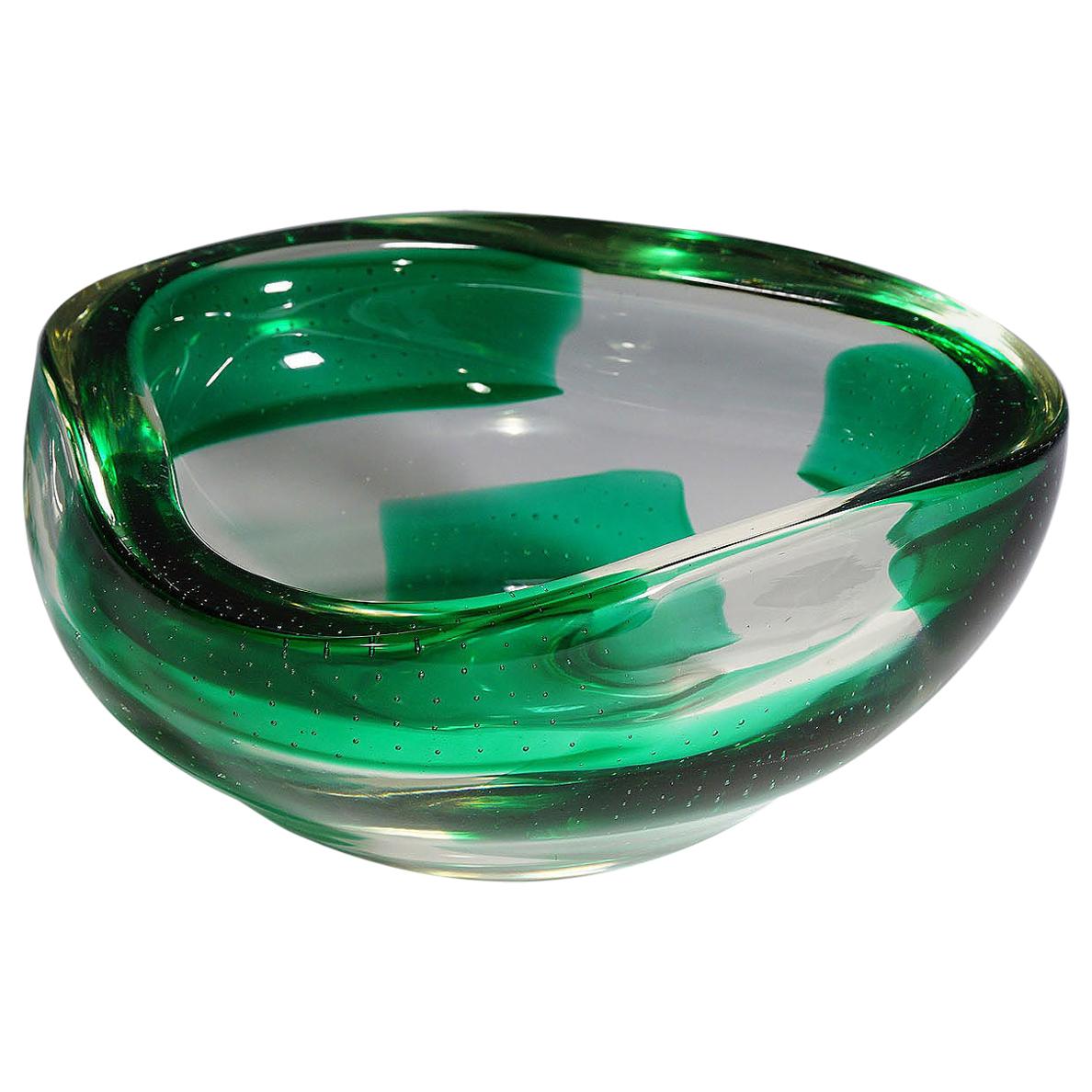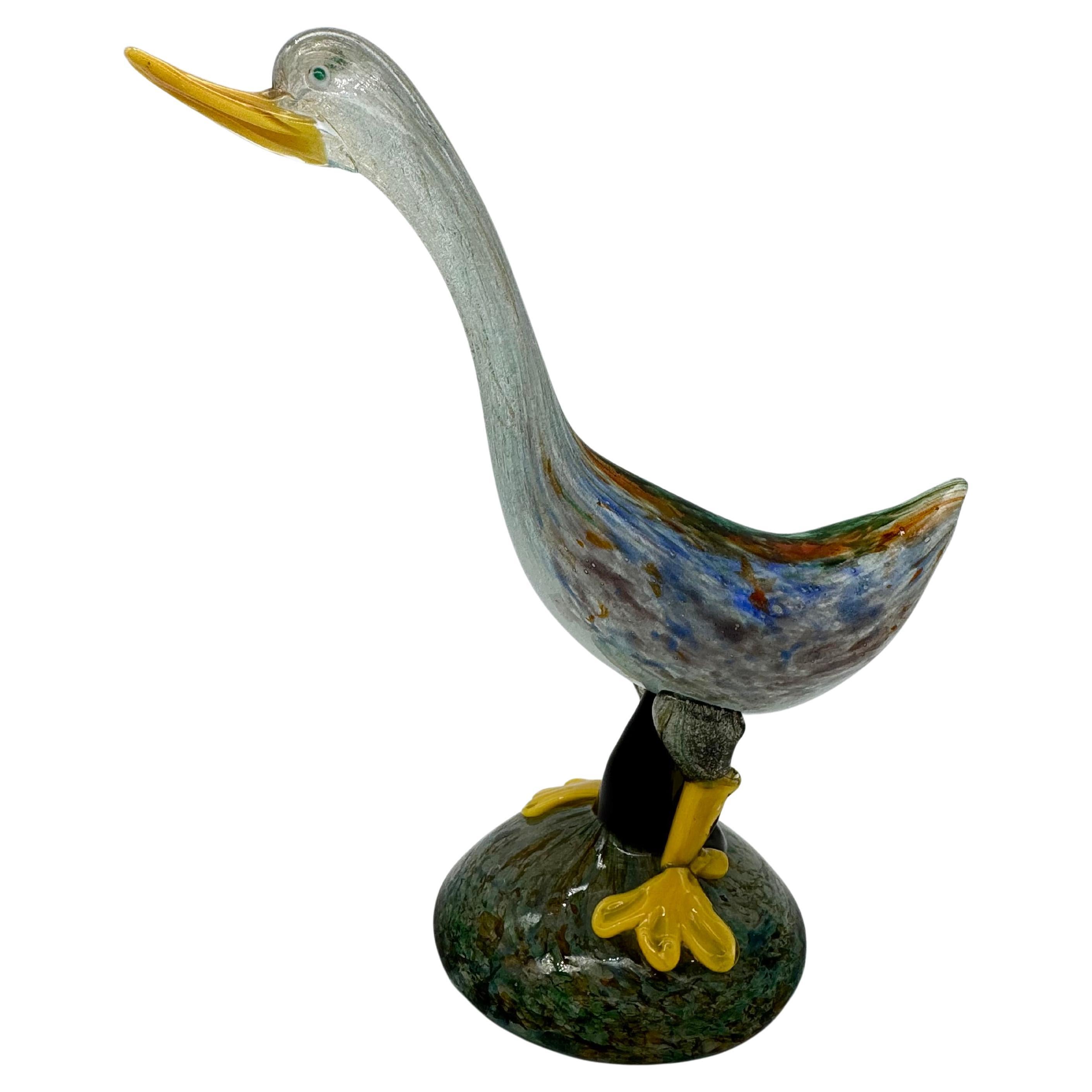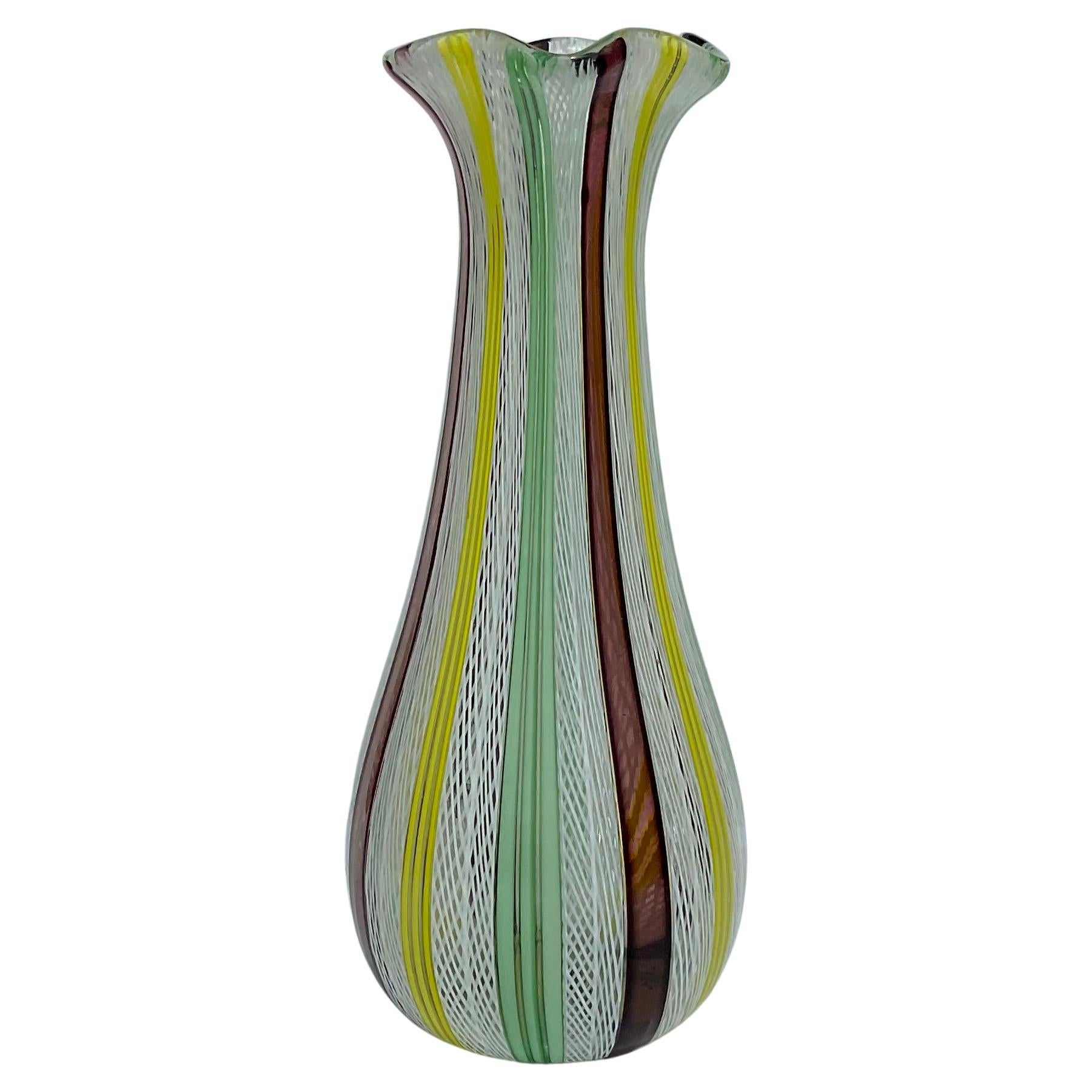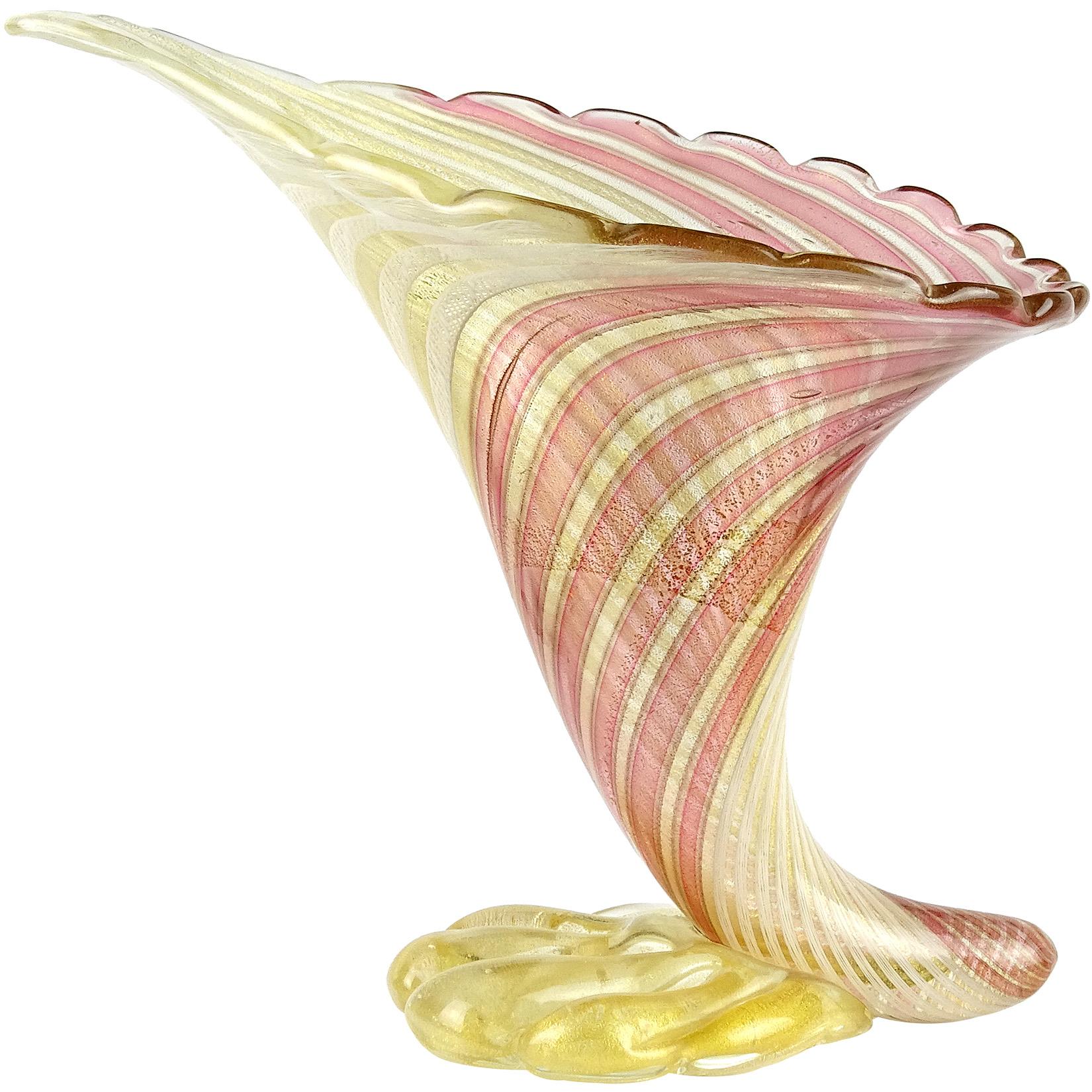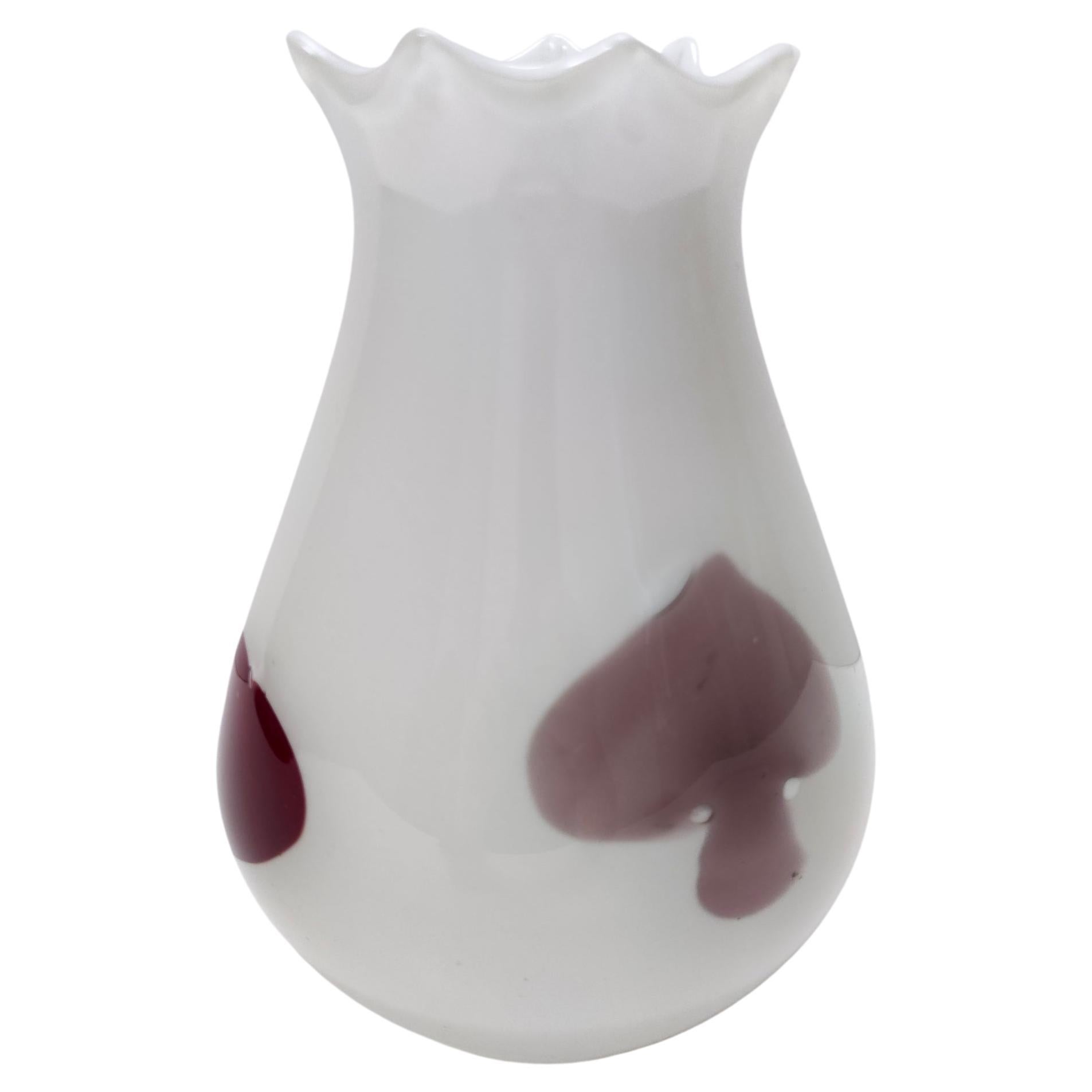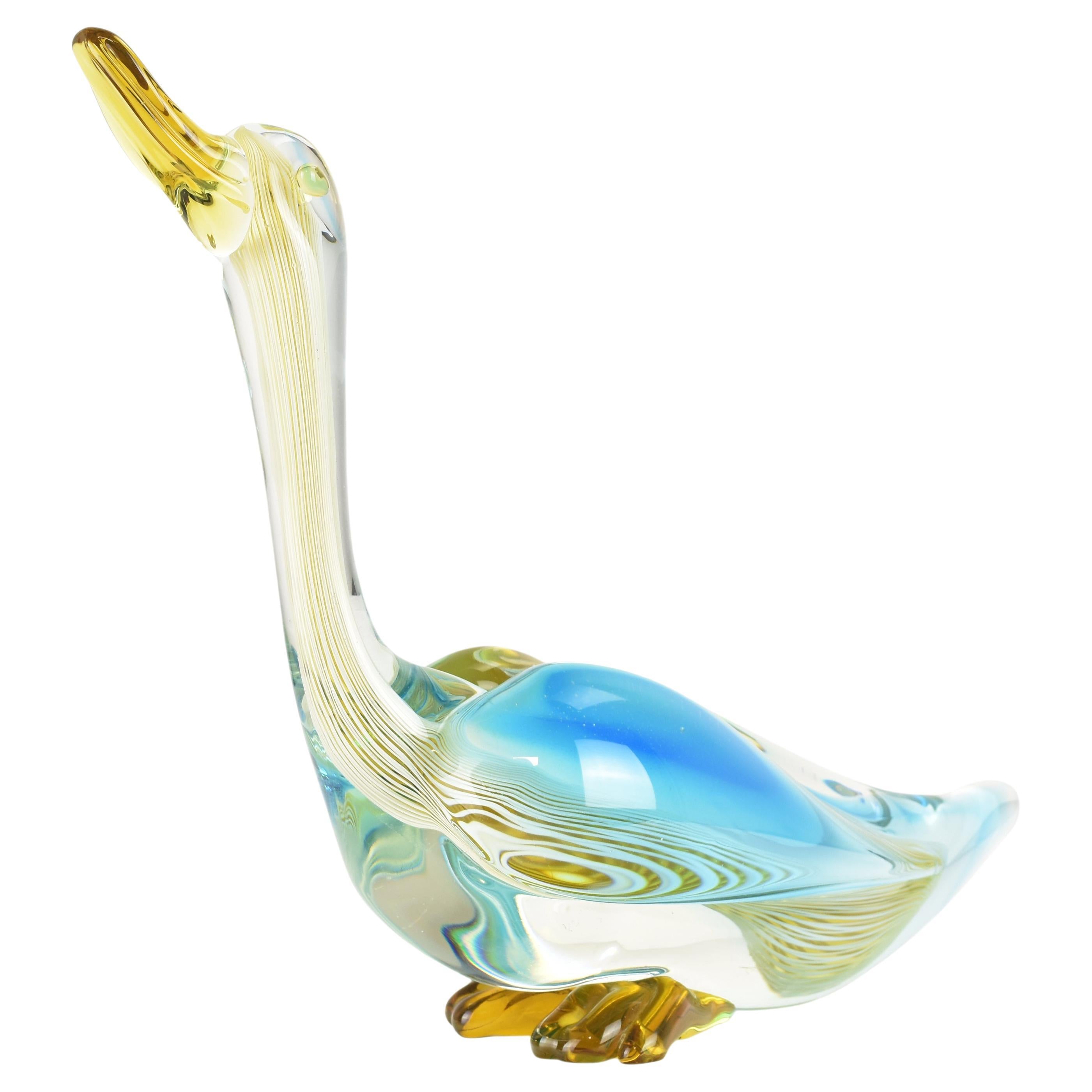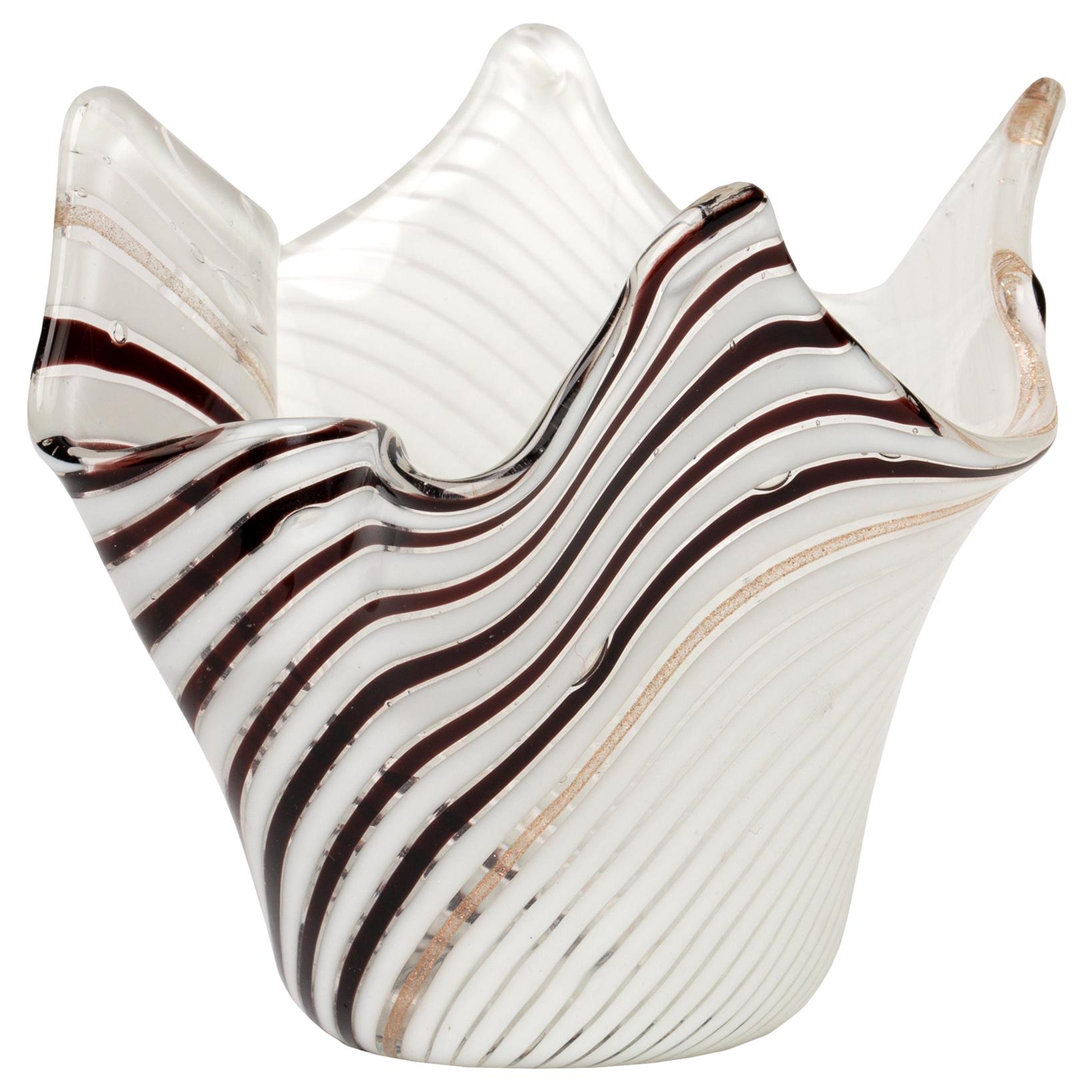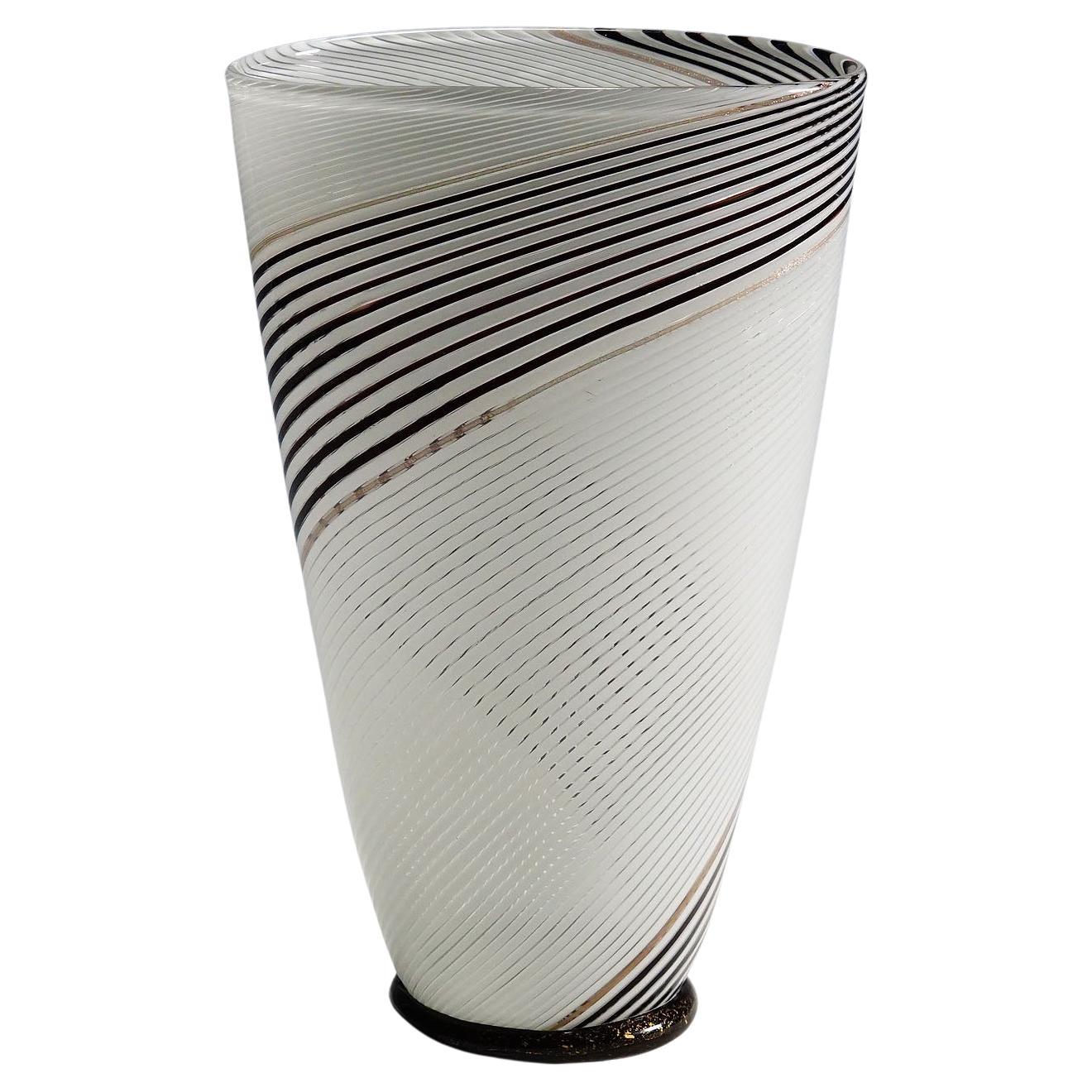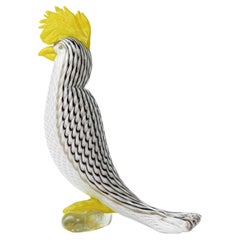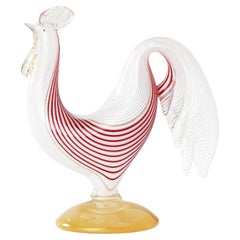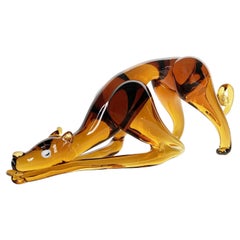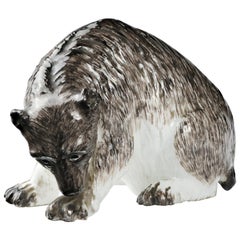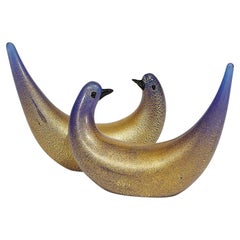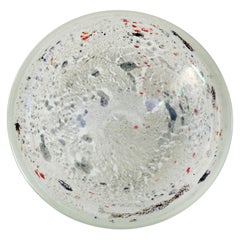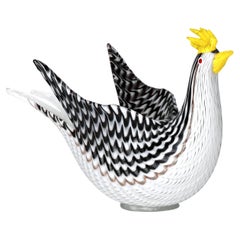
Murano Glass Bird Bowl, Dino Martens, Venice Aureliano Toso, 1952
View Similar Items
Video Loading
Want more images or videos?
Request additional images or videos from the seller
1 of 20
Murano Glass Bird Bowl, Dino Martens, Venice Aureliano Toso, 1952
About the Item
- Creator:Dino Martens (Designer)
- Dimensions:Height: 6.62 in (16.8 cm)Width: 10.4 in (26.4 cm)Depth: 5.12 in (13 cm)
- Style:Modern (Of the Period)
- Materials and Techniques:
- Place of Origin:
- Period:
- Date of Manufacture:Circa 1952
- Condition:Repaired: Glue on the tail and on the crest. Minor structural damages.
- Seller Location:Milano, IT
- Reference Number:1stDibs: LU4352234005742
About the Seller
4.3
Vetted Professional Seller
Every seller passes strict standards for authenticity and reliability
Established in 1860
1stDibs seller since 2018
21 sales on 1stDibs
Associations
International Confederation of Art and Antique Dealers' Associations
Authenticity Guarantee
In the unlikely event there’s an issue with an item’s authenticity, contact us within 1 year for a full refund. DetailsMoney-Back Guarantee
If your item is not as described, is damaged in transit, or does not arrive, contact us within 7 days for a full refund. Details24-Hour Cancellation
You have a 24-hour grace period in which to reconsider your purchase, with no questions asked.Vetted Professional Sellers
Our world-class sellers must adhere to strict standards for service and quality, maintaining the integrity of our listings.Price-Match Guarantee
If you find that a seller listed the same item for a lower price elsewhere, we’ll match it.Trusted Global Delivery
Our best-in-class carrier network provides specialized shipping options worldwide, including custom delivery.More From This Seller
View AllGlass Parrot-Shaped Sculpture, Dino Martens, Venice, Aureliano Toso, 1953-1956
By Dino Martens
Located in Milano, IT
Parrot-shaped sculpture Psitaccus
Dino Martens (1894 - 1970)
Vetreria Artistica Rag. Aureliano Toso, 1953-1956
It measures 9.055 inches in height x 4.13 in x 5.90 in (23 cm, 10.5 cm x 15 cm)
It weighs 1.997 lb (906 g)
State of conservation: intact.
The small glass sculpture...
Category
Vintage 1950s Italian Modern Glass
Materials
Blown Glass
Murano Glass Rooster-Shaped Sculpture, Dino Martens, Venice Aureliano Toso, 1954
By Dino Martens
Located in Milano, IT
Rooster- shaped sculpture Galletto
Dino Martens (1894 - 1970)
Vetreria Artistica Rag. Aureliano Toso, 1954
It measures 9.25 inches in height x 8.18 in x 4.4 in (23.5 cm x 20.8 cm x 11.4 cm)
It weighs 2.57 lb (1.169 g)
State of conservation: intact.
The small glass sculpture...
Category
Vintage 1950s Italian Modern Animal Sculptures
Materials
Glass
Greyhound - Shaped Glass Sculpture, Flavio Poli, I.V.A.M. Murano, Circa 1930
By Flavio Poli
Located in Milano, IT
Greyhound - shaped glass sculpture
Flavio Poli
I.V.A.M. Murano, circa 1930
It measures 4.72 in in height x 12.59 x 3.74 (12 cm x 32 x 9.5)
It weighs 2.42 lb (1.1 kg)
State of conse...
Category
21st Century and Contemporary Italian Modern Animal Sculptures
Materials
Murano Glass
Meissen Porcelain Bear, Johann Gottlieb Kirchner, Johan Joachim Kaendler, 1735
By J.J. Kaendler
Located in Milano, IT
Hard porcelain bear modeled and painted in gray-brown and black
Manufacture of Meissen, by Johann Gottlieb Kirchner and Johan Joachim Kaendler, 1735
It...
Category
Antique 1730s German Baroque Porcelain
Materials
Porcelain
19th Century Italian Sterling Silver Madonna, circa 1830
Located in Milano, IT
Embossed and engraved silver plaque
La Madonna del lago (The Madonna of the Lake)
Probably Milan, post 1824
Brass frame
It measures 16.14 in x 13.85 in (41 x 35.2 cm) and it weighs 10.357 pounds (4.698 g): silver 1.31 pounds (598 g) + brass 9.03 pounds (4.100 g)
State of conservation: some abrasions on the bottom. The frame is old, but not original.
The plaque is made up of a sheet of embossed and engraved silver, and held in a solid brass frame. It depicts the “Madonna del lago” – “Madonna of the Lake” - (the Madonna with Child and San Giovannino) by Marco d'Oggiono (Oggiono, 1474 circa - Milan, 1524 circa), while changing only the background landscape. Almost certainly the subject reproduced in the plaque was taken from a famous engraving by Giuseppe Longhi (Monza, 1766 - Milan, 1831), one of the greatest engravers of his era.
The silver is unmarked, probably because originally the Madonna was due to be exposed in a church: sometimes precious metals destined for worship and liturgical use would be exempted from payment and were, therefore, not marked.
It is very likely that the plaque was made in Milan because in this city in 1824 the engraving by Giuseppe Longhi was made and printed. In addition, in Milan, the alleged lost painting by Leonardo da Vinci in his Milanese period (1482-1500) would be produced; this is the painting from which Marco d'Oggiono took his version.
The painting
Marco d?Oggiono was one of Leonardo da Vinci's most brilliant students and collaborators (D. Sedini, Marco d’Oggiono, tradizione e rinnovamento in Lombardia tra Quattrocento e Cinquecento, Roma 1989, pp. 151-153, n. 56; p. 225, n. 124, with previous bibliography). His style reflects in every way that of the Tuscan Maestro, so much so that he was the one who executed some copies of da Vinci's paintings. The execution of the “Madonna del Lago” probably draws inspiration from a lost painting by the Maestro, created while he was living in Milan (1482-1500). There are many similarities with other works by Leonardo such as the “Vergine delle rocce” or the “Vergine con il Bambino e San Giovannino, Sant’Anna e l’Agnello”.
The painting, from which the drawing and then the famous engraving were taken, is found today at the M&G Museum of Bob Jones University in Greenville, South Carolina, where it came to rest after the sale of the Harrington Collection in London in 1917.
The work appears in the inventories of the collection of Napoleon and Joséphine Bonaparte at the castle of Malmaison, before 1809.
The Malmaison building was born and developed in the 17th and 18th centuries. In the 18th century it belonged to Jacques-Jean Le Coulteux du Molay, a wealthy banker. Later, during the Directory, Joséphine Bonaparte de Beauharnais bought it on April 21st, 1799, but settled at the castle definitively only after her husband separated from her in 1809. She remained there until 1814, the year of her death. When Joséphine died, the estate passed to her son Eugène de Beauharnais, who moved to Munich with his whole family in 1815, bringing with him the collection of paintings he inherited from his mother. Eugène died in 1824 and his wife Augusta of Bavaria (von Bayern), unable to keep it, in 1828 sold the Malmaison to the Swedish banker Jonas-Philip Hagerman.
It is likely that in this period Augusta also sold part of the paintings inherited from her husband, including the “Madonna del Lago”. This painting then came into the possession of Leicester Stanhope, fifth Earl of Harrington (1784 - 1862) and then was passed down to his descendants.
In 1917, at the death of Charles, eighth Earl of Harrington, his brother Dudley inherited the title and properties and he put up a part of his collections for sale. Among these, precisely, the painting by Marco d'Oggiono was to be found.
On the occasion of that auction the painting was presented as a work by Cesare da Sesto, by virtue of a handwritten note by the Countess of Harrington on the back of the table. However, already in 1857, the German critic Gustav Waagen had identified Marco d'Oggiono as the author of the painting, then exhibited in the dining room of Harrington House in London (Treasures of Art in Great Britain, in 4 volumes, London, 1854 and 1857).
The engraving
Giuseppe Longhi was one of the most renowned engravers in Italy between the end of the 18th century and the first quarter of the 19th century.
In 1824 Giuseppe Longhi, based on a design by Paolo Caronni, made a famous engraving of the painting of Marco d?Oggiono. The activity of Longhi was then at the peak of his notoriety, enough to earn him very substantial commissions; it is not risky to suppose that some of his successful engravings were also reproduced using other means: in our case in silver. (A. Crespi, a cura di, Giuseppe Longhi 1766–1831 e Raffaello Morghen...
Category
Antique 1820s Italian Neoclassical Sterling Silver
Materials
Sterling Silver, Brass
Ancient Boxwood Micro Carving Deposition, First Half of the 18th Century
Located in Milano, IT
Boxwood micro carving
Deposition
Central Europe, first half of the 18th century
It measures: the sculpture 7.40 x 5.31 x 0.6 in (18.8 x 13.5 x 1.6 cm); w...
Category
Antique 1740s European Baroque Figurative Sculptures
Materials
Boxwood
You May Also Like
Dino Martens for Vetreria Aureliano Toso, Golden Dove Pair, Murano, Italy, 1940s
By Dino Martens, Aureliano Toso
Located in Brooklyn, NY
Dino Martens for Vetreria Aureliano Toso, Golden Dove pair, Murano, Italy, 1940s.
Rare early Dino Martens (1894-1970) for Vetreria Aureliano Toso; Colombella...
Category
Mid-20th Century Italian Mid-Century Modern Animal Sculptures
Materials
Gold
$4,400 Sale Price / set
50% Off
Dino Martens Aureliano Toso Murano Iridescent White Grey Italian Art Glass Bowl
By Aureliano Toso, Dino Martens
Located in Kissimmee, FL
Rare and beautiful, vintage Murano hand blown grayish white, black and red colored pigments Italian art glass bowl. Documented to designer Dino Martens for Aureliano Toso, circa 1947...
Category
Mid-20th Century Italian Mid-Century Modern Decorative Bowls
Materials
Glass, Sommerso, Murano Glass, Blown Glass, Art Glass
$900 Sale Price
25% Off
Dino Martens for Aureliano Toso Coppa Pesante Glass Bowl, 1940s
By Aureliano Toso, Dino Martens
Located in Berghuelen, DE
A large Venetian Sommerso glass bowl designed by Dino Martens and manufactured by Aureliano Toso in the 1940s. Thick clear glass with rectangular green spots and bubble areas.
Measu...
Category
Mid-20th Century Italian Mid-Century Modern Decorative Bowls
Materials
Art Glass
Mid-Century Murano Glass Duck, Aureliano Toso & Dino Martens
By Dino Martens, Aureliano Toso
Located in CABA, AR
Immerse yourself in the artistry of Murano glass with this stunning duck, a testament to the exceptional craftsmanship of the prestigious Aureliano Toso glass factory. Attributed to ...
Category
Mid-20th Century Mid-Century Modern Animal Sculptures
Materials
Blown Glass
Large Dino Martens Aureliano Toso Attributed Murano Art Glass Latticino Vase
By Dino Martens
Located in Ann Arbor, MI
Large Dino Martens Aureliano Toso Attributed Murano Art Glass Latticino Vase In vibrant multi color individual canes. Very well executed Murano art glas...
Category
Vintage 1950s Italian Mid-Century Modern Glass
Materials
Art Glass
Dino Martens Aureliano Toso Murano Gold Flecks Italian Art Glass Flower Vase
By Aureliano Toso, Dino Martens
Located in Kissimmee, FL
Gorgeous Murano hand blown Zanfirico ribbons and gold flecks Italian art glass sculptural flower vase. Documented to designer Dino Martens for Aureliano Toso, circa 1954, model number 5669 (published, see last photo). The piece has white net Zanfirico ribbons and pink “A canne” ribbons alternating on the vase. The piece is profusely covered in heavy gold leaf throughout, including the shell shaped foot. Mid-century era. Measures: 8 1/2” tall x 9 1/2” long x 6” wide.
Literature: Vetreria Aureliano Toso, Murano 1938-1968, Designs by Dino Martens, Enrico Potz...
Category
Mid-20th Century Italian Mid-Century Modern Vases
Materials
Gold Leaf
$2,000 Sale Price
20% Off
Recently Viewed
View AllMore Ways To Browse
Tre Fuochi
Antique Piggin
Blenko Blue Pitcher
Blenko Purple Decanter
Josephine Hutte
Murano Glass Tre Fuochi
Brilliant Cut Crystal Carafe
Carlo Moretti Turquoise
Venini Vanity Tray
Bakewell Glass
Venetian Wine Decanter
Baccarat Talleyrand
Karel Zemek
Vintage Clear Glass Punch Bowl Set
Tangerine Glass Decanter
Carlo Scarpa Hexagonal Glasses
Cranberry Thumbprint
Holmegaard Princess
